Archives
Full Moon Blocked Drains
Regardless of the season, tree roots block drains.
And there is a school of thought they occur more during the full moon :-).
However, there is no scientific evidence to suggest that tree roots are more likely to cause blocked drains during the full moon.
The idea that the full moon affects tree roots and causes them to grow more or become more active is a myth that has been around for a long time.
Blocked drains can be caused by a variety of factors, including tree roots about 85% of the time.
Tree roots grow in response to a variety of factors, such as moisture, nutrients, and changes in temperature, but the phase of the moon has no effect on this process.
Tree leaves and other debris, especially from our deciduous trees can accumulate in pipes, as well as grease, oil, and other substances like paint and even cement sometimes gets poured down the drain.
Regular maintenance and cleaning can help prevent blocked drains and keep your pipes flowing smoothly.
The full moon on the east coast of Australia is at about 14.30 today April 6th, 2023.
Emergency plumbing in rain-soaked Sydney
March 8th 2022.
Today was full of plumbing emergency calls.
Driving through our rain-soaked city can be dangerous as drivers speed through puddles and potholes to get to their destinations with scant regard to other road users.
Our client in the Ryde area had a faulty pump under their house and the lower floor was in danger of flooding their rumpus room and home gym. The pump was resuscitated for now but, it needs to be replaced.
See the journey from Ryde back to our Coogee HQ along Victoria Road, over the Gladesville, Iron Cove and Anzac bridges before crossing Darling Harbour then through the city and Darlinghurst, Anzac Parade and Randwick Racecourse.
The roads are soaked and the rain keeps coming.
High winds are forecast for later tonight.
If you can clear any leaf debris from pits, roof gutters and drains around your house, better do it soon!
Then tighten your seatbelts Sydney.
Winds are forecast to blow up to 35 knots (70 kph) tonight.
If you need a hand call us on 02 9664 4990
Raw sewer overflows to Coogee Beach.
During the Stay at Home orders we’ve been doing emergency plumbing repairs like hot water, leaking pipes and Blocked drains.
The blocked drain that got my interest is the one taking the waste from 28 houses on Raleigh Street and Carrington Road, Coogee.
The filthy waste water has been bubbling up through the ground about 50 metres down the hill from the houses and running across the footpath in front of other homes not connected to the service, into the street gutters that drain into the creek at the north end of Coogee beach for most of July.
Apparently the 28 home owners are unaffected by the blockage because it’s not in their backyard and a Sydney Morning Herald article reports Sydney Water and Randwick City council cannot force the home owners to pay for any repairs.
It’s well known that every home owner is responsible for the maintenance of their waste water pipes up to where they join the Sydney Water sewer main out in Carrington Road.
This pipeline is known as a common sewer and the costs for any maintenance should be shared equally between all those home owners connected to it.
Come on Randwick Council, Stop this river of sewage running down to Coogee Beach!
Get a contractor to fix the problem and split the costs among the 28 property and home owners.
Click here to read our earlier post on Common Sewer lines.
How to Stop a Blocked drain in Coogee
Vaporooter Stops Tree roots in Drains
Hi, It’s Dave Conroy here from The Lone Drainer and Pronto.
I am in Coogee today and we are applying Vaporooter to a house in this tree- lined street. The people who own this house have had problems with their sewer.
Tree roots from this Hills weeping fig (ficus microcarpa) have been growing in their clay sewer pipes for over 10 years and we had been clearing blockages regularly.
We have been applying Vaporooter in those same pipes now for about four years and they haven’t had a blocked drain since. Those are great results!
If you live in a street similar to this, where there is a beautiful canopy above but underground, the tree roots are getting into your sewer pipes, then you should consider Vaporooter to Stop tree roots in your drains.
If you would like to find out about Vaporooter, call me on Sydney 02 9664 4990.
Is it O.K. to take a longer shower?
As Sydney and most of New South Wales is knee-deep in floodwater I had a friend ask me this morning, “is it OK to take a longer shower?”
I encouraged him and his entire family to take a longer shower over the next few days. Using the water may actually help those that are living downstream from Warragamba Dam where the residents and farmers are flooded by the water running over the dam spillway and overwhelming the Nepean and Hawkesbury river systems downstream.
Just over twelve months ago we were in the grip of a drought that was choking our country cousins and dust storms were commonplace across New South Wales.
The rain won’t last forever, in fact, it’s forecast to clear up this afternoon and deliver a 29° hot sunny day tomorrow.
The rain has exposed many blocked drains and stormwater pits and pipes. So when the sun comes out, make the most of the abundant water in our catchment dams and clean out those pits, grates, drains and the rainwater down pipes blocked with leaf debris.
World Plumbing Day 2021
Today is the 11th of March 2021 and it’s World Plumbing Day!
I just wanted to remind you that twelve months ago today, which was also World Plumbing Day, that we had a pandemic declared in Australia. While we’ve all had our lives changed over the last twelve months, the trees that you can see around me here are still growing in the drains in this house.
We have come back for our annual application of Vaporooter to STOP tree roots growing in the sewer pipes of this beautiful home.
Enjoy World Plumbing Day. Thank your local plumber, enjoy his company. Make him a cup of tea or coffee.

Woollahra Council trees are blocking my drains
Many of the blocked drains we attend to are caused by the trees that line the streets managed by Woollahra Council.
At street level, the trees’ canopy brings summer shade and all kinds of birdlife.
Contrary to belief, tree roots don’t go in search of water. They are stimulated as moisture levels, and the surrounding soil temperature reaches a point that is appealing to them.
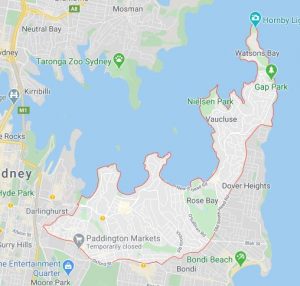
Sydney suburbs managed by Woollahra Council: Bellevue Hill, Darling Point, Double Bay, Edgecliff, Paddington, Point Piper, Rose Bay, Vaucluse
In most circumstances, the tree roots enter through leaking pipe joints and damage the sewer drains and stormwater pipes that take wastewater off your property. Many homeowners hold Woollahra Council responsible for their blockage and expect they will clear their blocked drains for free because the Council own the trees.
Well, in some cases they do!
But, Woollahra Council gets their income from you the ratepayer, and as you would expect, they have guidelines for spending ratepayers money to fix your blocked drains.
If you live in one of the suburbs managed by Woollahra Council, click here to see the Woollahra Council Wastewater Policy.
The top points are that you the homeowner:
Must have a sewer service diagram for your home.
Must maintain your sewer pipes.
Must prevent sewer blockages.
Must prevent sewerage from escaping into the environment.
May be entitled to the Council plumber clearing your blocked drain.
Waverley Council trees are blocking my drains
Did you know 85% of blocked drains are caused by tree roots?
In Waverley Council’s jurisdiction, blocked drains are cause quite often by the roots of the trees that line the streets.

They can block drains and sometimes damage the sewer and stormwater pipes that take wastewater off your property.
Many homeowners hold Waverley Council responsible for their blockage and expect they will clear their blocked drains for free because they own the trees.
Well in some cases they do!
But, Waverley Council gets their income from you the ratepayer and as you would expect, they have guidelines for spending ratepayers money to fix your blocked drains.
If you have a Blocked drain and live in one of these suburbs managed by Waverley Council including Bondi, Bondi Beach, Bondi Junction, Bronte, Charing Cross, Clovelly, Dover Heights, North Bondi, Queens Park and Waverley, click here to see the Waverley Council Sewerage Stormwater Drain Blockage Policy.
The top points are that you the homeowner:
Must have a sewer service diagram for your building.
Must maintain your sewer pipes.
Must prevent sewer blockages.
Must prevent sewerage from escaping into the environment.
May be entitled to the Council plumber clearing your blocked drain.
Randwick Council trees are blocking my drains
Blocked drains are a large part of our workday; every day! And 85% of blocked drains are caused by tree roots. Our home is Coogee Randwick, in the eastern suburbs of Sydney Australia.

Tree-lined streets in Randwick Council are the reason for a lot of the blocked drains that we attend to. They damage the sewer drains and stormwater pipes that take wastewater off your property.
Many homeowners hold the council responsible for their blockage and have expectations that the council will clear their blocked drains for free because they own the trees.
Well in some cases they do.
But, Randwick Council gets their income from you the ratepayer and as you’d expect they have guidelines for spending ratepayers money to fix your blocked drains.
If you live in one of these Sydney suburbs managed by Randwick Council including Centennial Park, Chifley, Coogee, Kensington, Kingsford, Little Bay, Malabar, Maroubra, Matraville, Pagewood, Phillip Bay, Port Botany and Randwick, click here to see Randwick Council Sewerage Stormwater Drain Blockage Policy.
The top points are that you the homeowner:
- Must have a sewer service diagram for your home
- Must maintain your sewer pipes.
- Must prevent sewer blockages
- Must prevent sewerage from escaping into the environment
- Maybe entitled to the Council plumber clearing your blocked drain
Flushable wipes block drains
As you know, up to 85% of blocked drains are caused by tree roots and can be easily managed.
But, there is a growing number of blocked drains that are caused by “hygienic wipes”. Hygienic wipes block up house drains and sewer mains that cost homeowners and Sydney Water a fortune to maintain. So be careful what you flush!
To put it simply, hygienic wipes don’t break down like toilet paper and as many household pipelines have imperfections, the wipes get caught and cause a blocked drain.
If you are polishing your bottom….. and flushing more wipes, you could be in trouble.
This Choice magazine YouTube video shows how wipes don’t break down for up to 21 hours.
Why you need a sewer diagram
One of the handiest tools for a plumbing professional is a sewer service diagram. It’s a map of where the sewer pipes run within your home.
It’s easily obtainable, and you can get it from Sydney Water, reputable plumbing suppliers and, even your local plumber can get it for you.
It’s simply an A4 sheet that has an outline of your home, your property. It shows where all the pipes run within your home and how they connect to the sewer.
The sewer service diagram will make it easier for your plumber to get into your sewer pipes to clear your blocked drain. And if you are planning a preventative maintenance program, it shows points of access where we can get into your pipes with a minimum of fuss.
In the long term it will save you money.
So if you have repeat problems with your sewer pipes, get a sewer diagram and keep it handy.
Can Coronavirus be spread through wastewater pipes in a home or hospital?
Sydney April 15th 2020
“Staying connected” has become a part of our language lately.
Did you know we are all connected through the wastewater pipes in our homes?
Whether you live in a single level detached home or a multi-storey building, all our plumbing fittings drain into the same city sewer. That’s your shower, bath, basin, your WC, kitchen sink, washing machine, laundry tubs and floor drains.
A study showed the 2003 SARS virus spread through the plumbing system of a HongKong residential complex whose residents had 300 confirmed cases and 42 deaths- about 1/6th of the infections and fatalities on the entire island.
Our Australian Standards state “all plumbing fixtures must have a working trap or water seal”. That is, the S-bend at the outlet of the fixtures should have water sitting in them OR flowing through them.

Regularly we’re asked to investigate “a sewer smell” in a bathroom or laundry that is nothing more than a dry trap.
But, its allowing smells and bacteria to come from the wastewater and sewer pipes into your room.
Hypothetically, if an infected neighbour flushed their toilet and that wastewater entered a pipe you’re connected to, then bacteria could pass through a dry trap and enter your bathroom.
While person-to-person and surface-to-person is the most common means of spreading Coronavirus, I want you to be aware that any open or dry traps may allow contaminated droplets into your space.
So:
• Do not ignore unexplained foul smells in bathrooms, kitchens or washing areas.
• Ensure all your sink traps and S-bends have water in them.
• Run water into all tubs and showers for a few seconds in the morning and evening, paying particular attention to floor drains in bathrooms and laundries.
• If the wastewater pipework from a toilet, sink or other household appliance appears to be disconnected or open, seal it immediately.
• If you find any crack or leak in pipework, seal it with strong tape.
• Encourage your facilities managers to monitor the wastewater system performance of your building, looking out for things such as drainage overflows or sewer smells.
If you have any questions about this, I invite you to call me.
Tree roots don’t know about Coronavirus
Sydney April 14th 2020
Easter is over for another year.
Although our towns are slowing because of the Coronavirus, and we are quickly changing our daily home and work habits, here at The Lone Drainer and Pronto, we are still working away.
Working from home is putting our normal facilities under a little more pressure. That means the internet, the exercise areas and our bathrooms.
With all that extra baking and comfort meals, our sewers are under a more significant workload. Tree roots don’t know about Coronavirus, and still seek food and water in the sewer pipes they can grow into.
So, if you hear your drains gurgling don’t ignore them. They are asking for help.
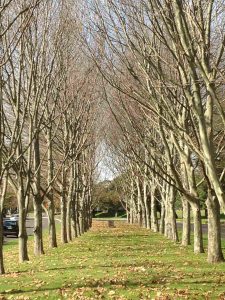
Dormant, but active underground
Why have a Drainoscopy?
Today our post is simple.
A client from Bronte called. Since Christmas they’d had 3 blocked drains causing the downstairs toilet to overflow. Yuck!
The plumber they had been using didn’t have a drain camera and it was suggested that the pipes were broken.
We were able to clear the blockage quickly, then, give the pipes a Drainoscopy. That’s Lone Drainer speak for “put a specialised drain camera in the pipes and see what is really going on.”
The pipe was full of tree roots. That’s all!
We cut out the roots and had another look.
A simple Vaporooter treatment will keep the roots away. With a Guarantee!
Yes, the pipes are old clay pipes. You can see where the roots have been cut out. But, they work and will for some time to come.
The best way to find out is to see it for yourself.
More rain please
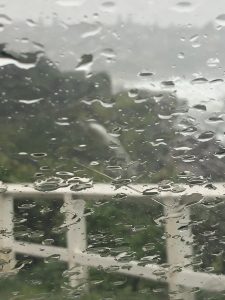
The rain has kept emergency plumbers on their toes.
If you need help with a flooding emergency, please call us.
Meanwhile, blow the rain to the west.
Our country cousins need it!
I don’t like cricket…I love it.
January 6th 2017 sees the rain tumbling down in Sydney’s eastern suburbs.
Day 4 of the New Years 3rd cricket test between Australia and Pakistan is delayed because of the heavy rain.
The gutters and drains around our home and office are full of leaf debris and could cause flooding for anyone who isn’t vigilant
Take a tip
- Check that your storm water drains and down pipes are free of debris before you go to the cricket.
Why you should look inside your pipes
You’ve got a blocked drain and your plumber puts a camera in the drain to see whats going on down there!
What happens after that?
Plenty of homeowners don’t get to see the footage their plumber has taken of the inside of their pipes. For some reason, the plumber chooses to keep what is going on in your pipes a secret from you.
Why?
Like any medical scan or x-ray of your body, it shouldn’t be kept a secret from you.
You should be able to see what’s going on in your drains so you can get a greater understanding of how the drains work. Or don’t!
Then, you can make an informed decision about how to repair your pipes and get other professional opinions on how to do that.
There are many ways to maintain your pipes and drains.
So if your plumber recommends a particular method of pipe repair after he puts a camera in your drains then tells you what he saw… but doesn’t show you, ask him for a copy of the pipe survey.
After all, he has billed you for it.
This survey shows a section of re-lined pipe with earthenware pipes and tree roots.
Winter rain comes with a blast
Winter Rain and blocked pipes.
The forecast east coast low started dumping rain on us last night. Road accidents caused by wet conditions and local flooding are the norm today. The weather bureau suggest these conditions will continue until Monday.
Blocked storm water drains, storm water pipes and storm water pits have been the order of the day today after the rain came thick and fast.
Where possible, keep your roof gutters and drains clear of leaf debris to avoid flooding and pipe overflows.
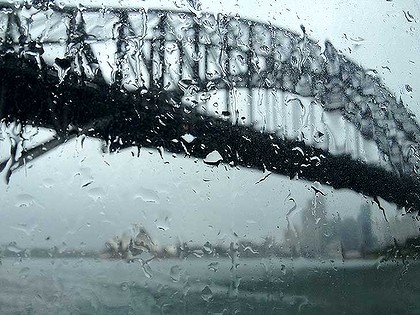
Sewer overflow makes Coogee a “smelly place”
Coogee means “smelly place” and yesterday the beautiful beach, just 500 metres from our HQ, lived up to the name given it by indigenous Australians. The smell and subsequent beach closure was brought about by a Sydney Water blocked sewer main in nearby Dudley Street.
The overflowing sewer main spilled into the storm water system which then discharged into the surf just near the Coogee Surf Club. Randwick City Council closed the beach and drained the Ross Jones pool that sits adjacent to the surf club and the storm water discharge.
Sydney Water maintenance crews cleared a blockage in the sewer main that was caused by tree roots.
The tree root blockage and sewer overflow was completely preventable. The beach has been re-opened today.
Clipping from Sydney’s Daily Telegraph:
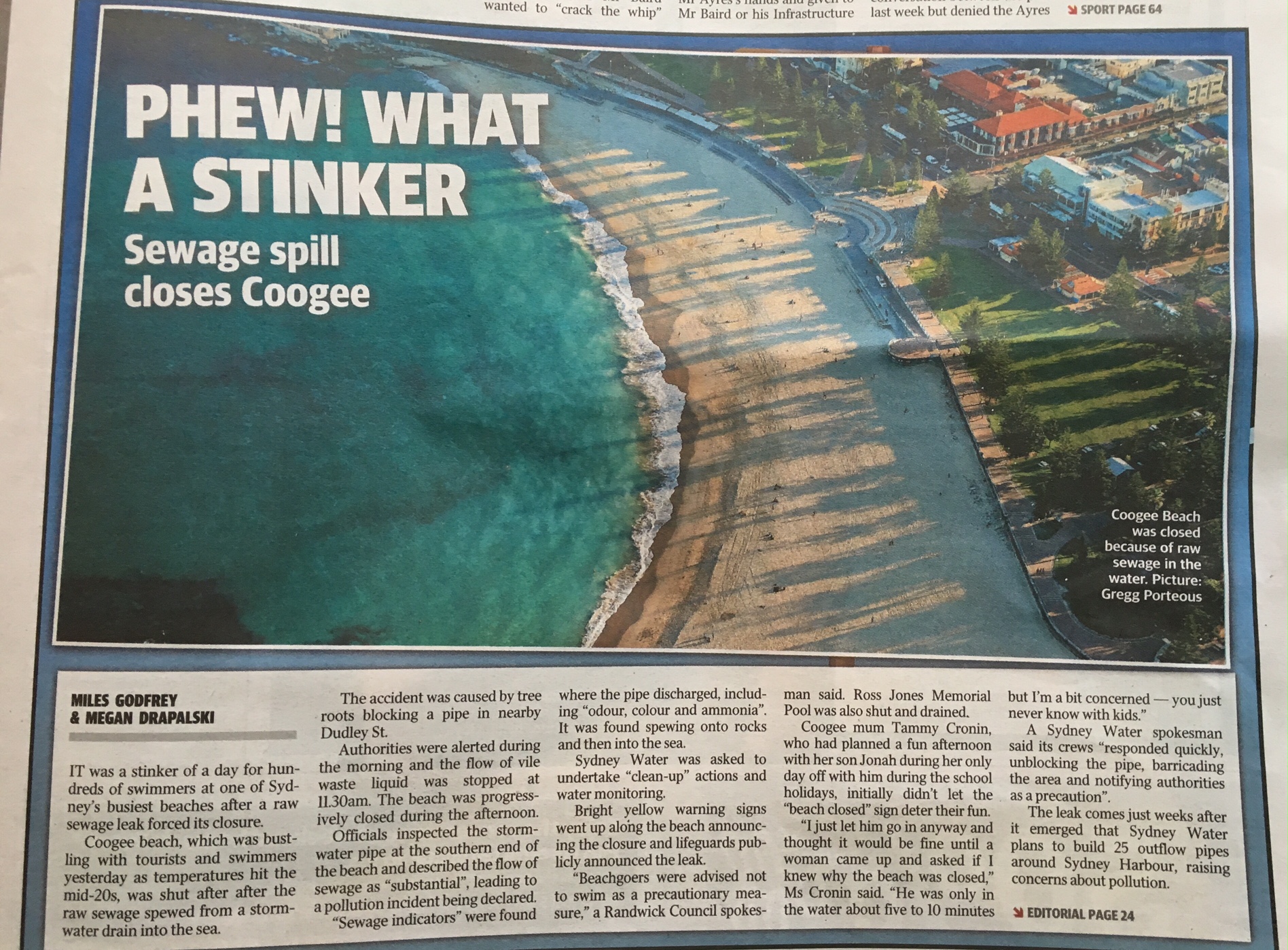
View your blocked drain with a Drainoscopy
Today our post is simple.
A new client from Bronte called because since Christmas they’d had 3 blocked drains which caused the downstairs toilet to overflow throughout their basement. YUK!
The plumber they had been using didn’t have a drain camera and it was suggested that the pipes were broken.
We were able to clear the blockage quickly, then did a Drainoscopy. That’s Lone Drainer speak for “put a specialised drain camera in the pipes to see what is really going on”.
The pipe was full of tree roots. That’s all! We cut out the roots and had another look. A simple Vaporooter treatment will keep the roots away. With a Guarantee!
Yes, the pipes are old clay pipes. You can see where the roots have been cut out. But, they work and will for some time to come.
The best way to find out what is causing a blockage is to see it for yourself.
A plumbers view – Super Bowl 2016
Sunday, February 7th was Super Bowl 50 Sunday in San Francisco. By now you may know The Denver Broncos beat the Carolina Panthers 24-10 at Levi’s Stadium.
What’s that got to do with plumbing? I hear you ask. Well plenty; according to the Scott Tissue company, the toilet is flushed more during halftime than at any other point during the year. That’s 90 million flushes, using 350 million gallons or 1,323,000,000 litres of water, which is the same amount of water that flows over Niagara Falls in seven minutes.
Now, that is…..a Super Bowl!
I’d like to know how many blocked drains happened on Super Bowl Sunday!

Don’t flush facial tissues
85% of blocked drains are caused by tree roots. However, what you flush down your loo can also contribute to that blockage.
Rain causes Bronte wall collapse
Sydney’s sustained rainfall has almost washed out the third cricket test between Australia and the West Indies at the Sydney Cricket Ground. The rain may have helped the Windies at the SCG but nearby Bronte residents awoke yesterday to find their Macpherson Street neighbours wall had collapsed into the street.
My initial drive past the site to survey the damage was met by a pile of sand, outdoor table and chairs, a picket fence and kids cubby house that had slipped onto the road.

It was interesting to see old earthenware pipes amongst the rubble. Maybe their stormwater pipes were blocked or leaking into the sand, probably washing out the pipe line, and the continuous rain caused the collapse.
I do not believe anyone has been injured. Here’s hoping this family can get back into their home soon.
Storm drains overflow
We had another storm blast through Sydney this afternoon.
We were safely on a boat in Rushcutters Bay fitting the gas cooker as the 60 knot wind blew through.
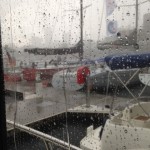
The rain poured down with hail stones thrown in. The storm flooded all the local street drains and in some places the gutters were up to 400mm deep in stormwater.
Please check the grates and drains around your home and ensure that they are clear and running freely. The storms come quickly and can create lots of damage fast.
If you need help…… Call us!
Get your personal pipes checked…. I did!
November is Men’s Health Month and my reminder came in the mail. “Its time to get your pipes checked again” said the friendly letter from my Colorectal surgeon. It spelt out the process, the fasting, the preparation, the costs, the procedure on the day, what to expect afterwards, the discomfort but most of all…….. the benefit!
So on Sunday I began the preparation for a colonoscopy on Monday. After a healthy and hearty breakfast on Sunday morning it was a time of fasting. No food! Then, from early afternoon into the evening I had to take not 1, not 2, but 3 doses of fairly unpleasant medicine that would clean my internal pipes so the surgeon could put his camera through them.
Now all this makes sense to a 54 year old father of 3 healthy and happy sons whose father, after being diagnosed with Prostate cancer passed away a few years ago.
So, I hear you ask, why is your plumber telling you this?
If your body is a temple as mine is, and your home is your castle, then it’s appropriate to get your pipes checked, especially if your castle has a history of problems or blockages in your sewer pipes.
There are many parallels between a Colonoscopy and a Drainoscopy.
To get a Drainoscopy is easy!
We clear your pipes and then put a specialized drain camera through the pipes to find out what is actually going on in there. Then we take the vision and put it on our YouTube channel with a description of what is going on in the pipes. You can see it, you can share it, you can get a second opinion, you can evaluate the information and understand exactly what is going on underground or in your pipes.
Yes, it is a little uncomfortable. But now I know that after Dr “L” has treated 2 areas of interest and checked my prostate, my pipes are in good condition. I’ve seen the pictures. And at the appropriate time, he will send me a reminder for my next Drainoscopy er Colonoscopy.
So to end on a high note watch this fun YouTube clip.
